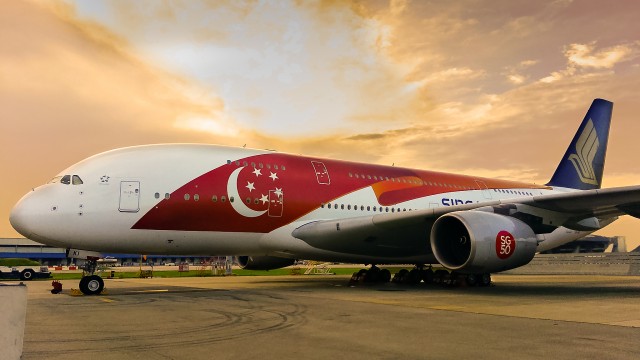
One of two Singapore Airlines A380s in special livery – Photo: Singapore Airlines
NOTE: The contest has now ended. If you didn’t win, but still want of these sweet models — you can still buy one direct. Thanks for participating and wait for our next one!
Luckily for us, many airlines have come up with special liveries over the years creating an extra sense of wonder when you spot one out in the wild.
Recently, Singapore Airlines unveiled a livery to celebrate the country’s 50th anniversary (SQ50) and we wanted to do a little celebrating with them and you. The airline was nice enough to offer two (very nice) models of the Airbus A380, wearing this livery. Read on to learn more and to possibly win!
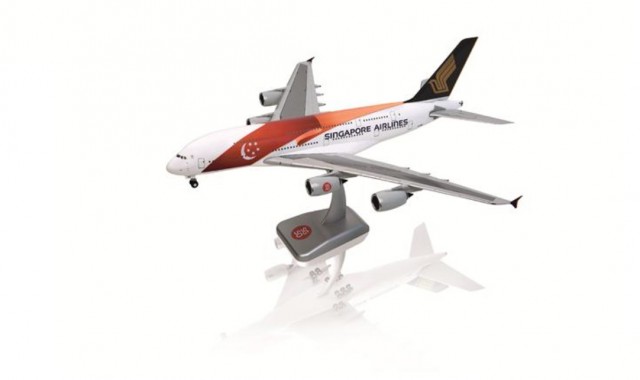
The 1:200 model up for grabs – Image: Singapore Airlines
ABOUT THE SINGAPORE AIRLINES SQ50 AIRBUS A380 MODEL
According to the airline, this model is, “a limited edition replica of the Singapore Airlines SG50 livery aircraft. Made of hard ABS plastic with a perfect snap fit construction, this highly detailed superior graphics true-to-scale 1:200 A380 model comes with landing gears and a display stand.”
This model is legit and not small. It’s length is 14.3’ and the 15.7 ” wingspan is impressive.
If you do not end up winning and still want to get one… you can. They are $128 (plus a 10% discount going on right now) on the Singapore Airlines Kris Shop.
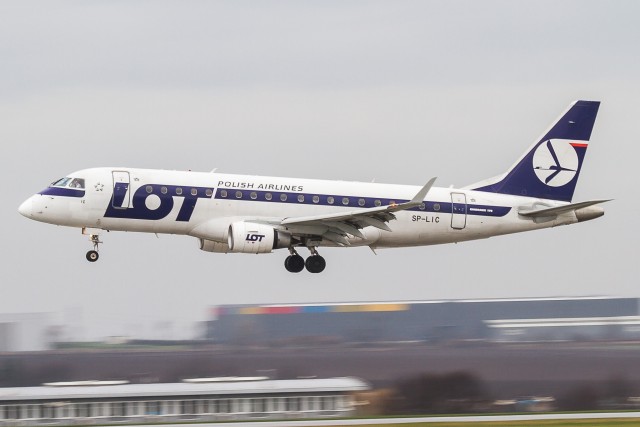
A LOT Embraer E-175 landing at Prague – Photo: Jacob Pfleger | AirlineReporter
Flying business class within Europe is not often an exciting nor noteworthy affair. That said, I was pleased to recently discover that it can still be a positive experience, with a lot more than meets the eye, and at a very affordable price.
I was fortunate enough to recently experience LOT Polish Airlines’ business class product from Warsaw to Prague. As part of its ongoing brand redevelopment, LOT, like many other carriers, has introduced an online bidding system for unsold business class seats, called plusgrade.
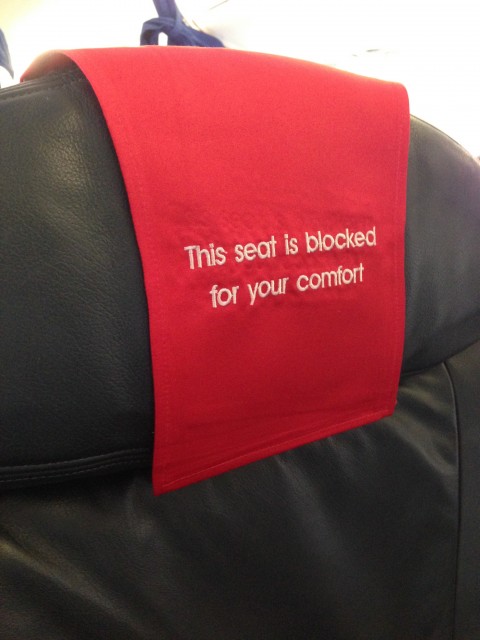
The only business class difference versus economy on intra-European flights – Photo: Jacob Pfleger | AirlineReporter
The system allows passengers to make a bid up to 72 hours before the flight’s departure, and there is a minimum amount that can be bid (in my case, it was approximately $80). At 48 hours prior to departure, I received an email that my bid was successful, and was issued a new ticket for business class — sweet.
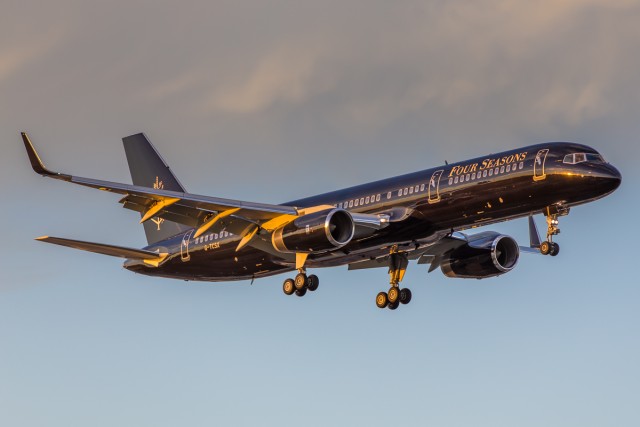
The Four Seasons 757 landing in Sydney, Australia last year – Photo: Bernie Proctor
Last year, the Four Seasons hotel and resort chain did a hospitality industry first: They made an inclusive, sometimes round-the-world, travel experience called the Four Seasons Private Jet Experience. By inclusive I mean that everything you saw after arriving at the airport was either arranged or directly handled by them.
The biggest of the trips is the 24-day Around the World adventure. And because this is the Four Seasons, everything is going to be high-end. That includes transportation to your destination(s) on one very VIP Boeing 757. During a stopover in Seattle, I was invited to take a tour and I was impressed.
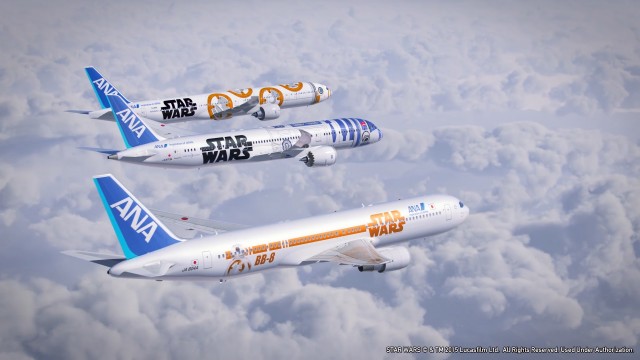
All three ANA Star Wars liveries – Photo: ANA
YES — AvGeek and Star Wars goodness together!
ANA has just announced that they will be putting two new Star Wars themed liveries to their fleet, which will jin the previously announced R2-D2 ANA Jet on a Boeing 787-9 Dreamliner. The first will feature BB-8, a brand new droid from Star Wars: The Force Awakens, which will be on a Boeing 777-300ER.
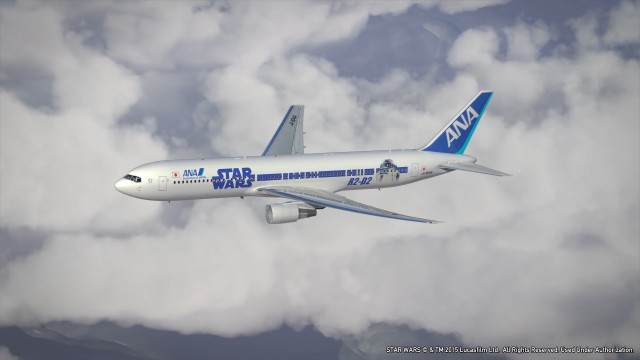
Special Star Wars BB-8 and R2-D2 combo livery on a Boeing 767-300 – Image: ANA
The second will be a combination livery of BB-8 down one side and R2-D2 on the other of a Boeing 767-300. If you want to see more images, we have plenty to share…
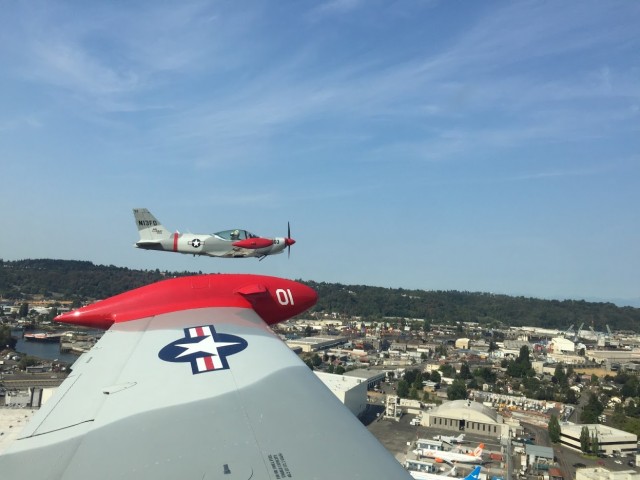
Departing KBFI in a formation flight ’“ Photo: Kassy Coan | AirlineReporter
It was a normal day, full of work, wishing I was out flying, and instead, coming home to a Netflix marathon. I proceeded to search for any and all movies about planes. I came across this shorter movie, Ultimate G’s: Zac’s Flying Dream, which made me feel better about myself due to the smaller time commitment.
To this day, this movie remains one of my favorites. Two children, one male and one female, dream of flying, and one day become professional pilots. They do aerobatics, formation flying, and dog fight via lasers on the planes. It was fun and adventurous, combining the video game concept of competitive shooting with the real life environment of flying and aerobatics, all while maintaining safety as a priority. I needed more.
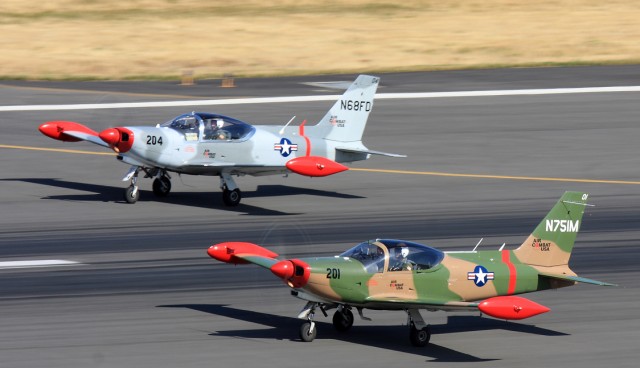
Two of Air Combat’s aircraft at Boeing Field – Photo: Jeremy Dwyer-Lindgren | JDL Multimedia
Months passed, and despite my research and dreams of being able to participate in such an immersive flying, laser-tag-like experience, I was convinced that it was just a movie. While I was losing hope, every once in a while I would inevitably talk with fellow AvGeeks about the movie experience, which had since embedded itself in the back of my mind. Most people had no idea what I was talking about, or would say “yeah, that would be cool,” then dismiss the conversation as something too unrealistic. Then randomly, last month, one of my coworkers had a different response. “I did something just like that with my father-in-law one time!”
I couldn’t believe my ears. He directed me to a site called Air Combat USA. There it was, right in front of me – a traveling, civilian dog fight school. I checked the flight dates, and signed up. It was very convenient that they were based out of my city, Seattle, for most of the month of August!








